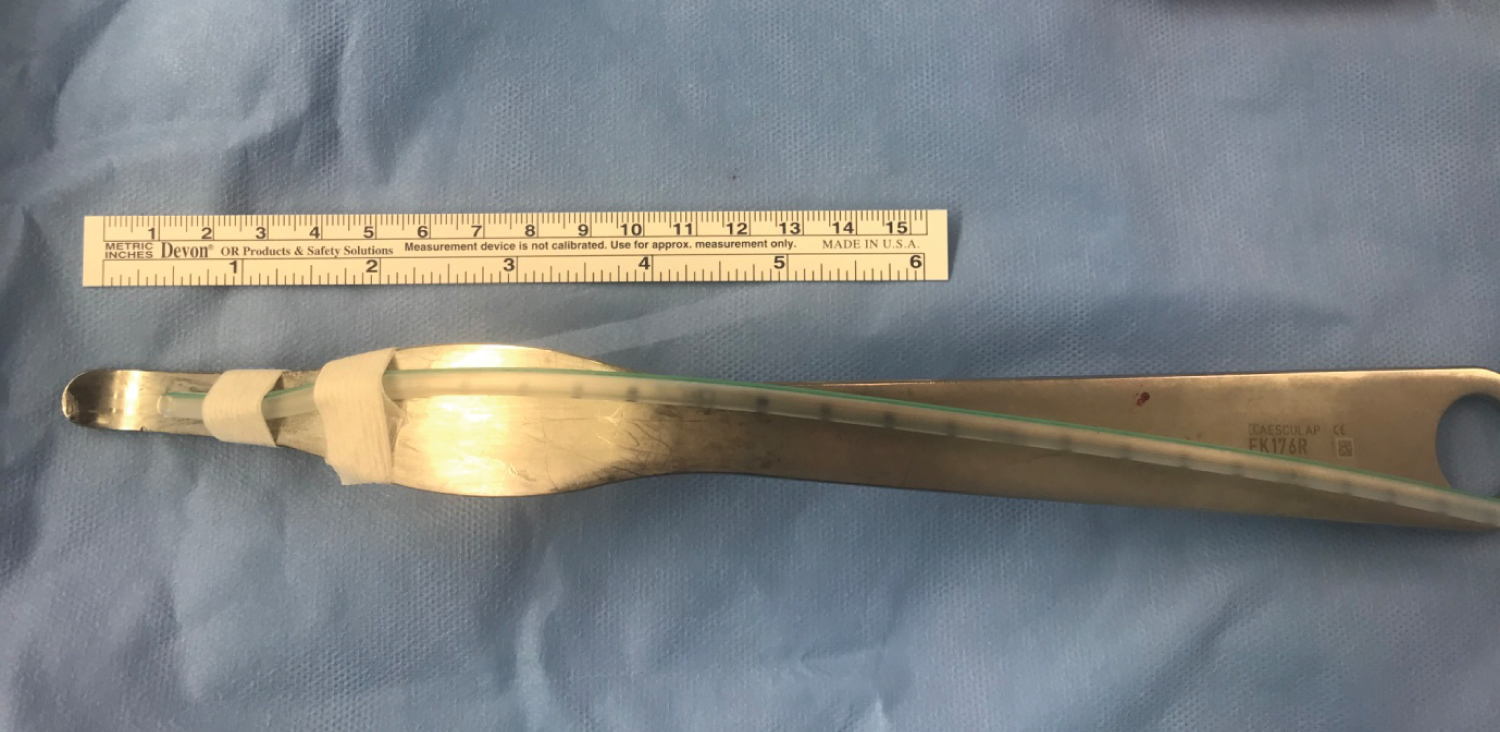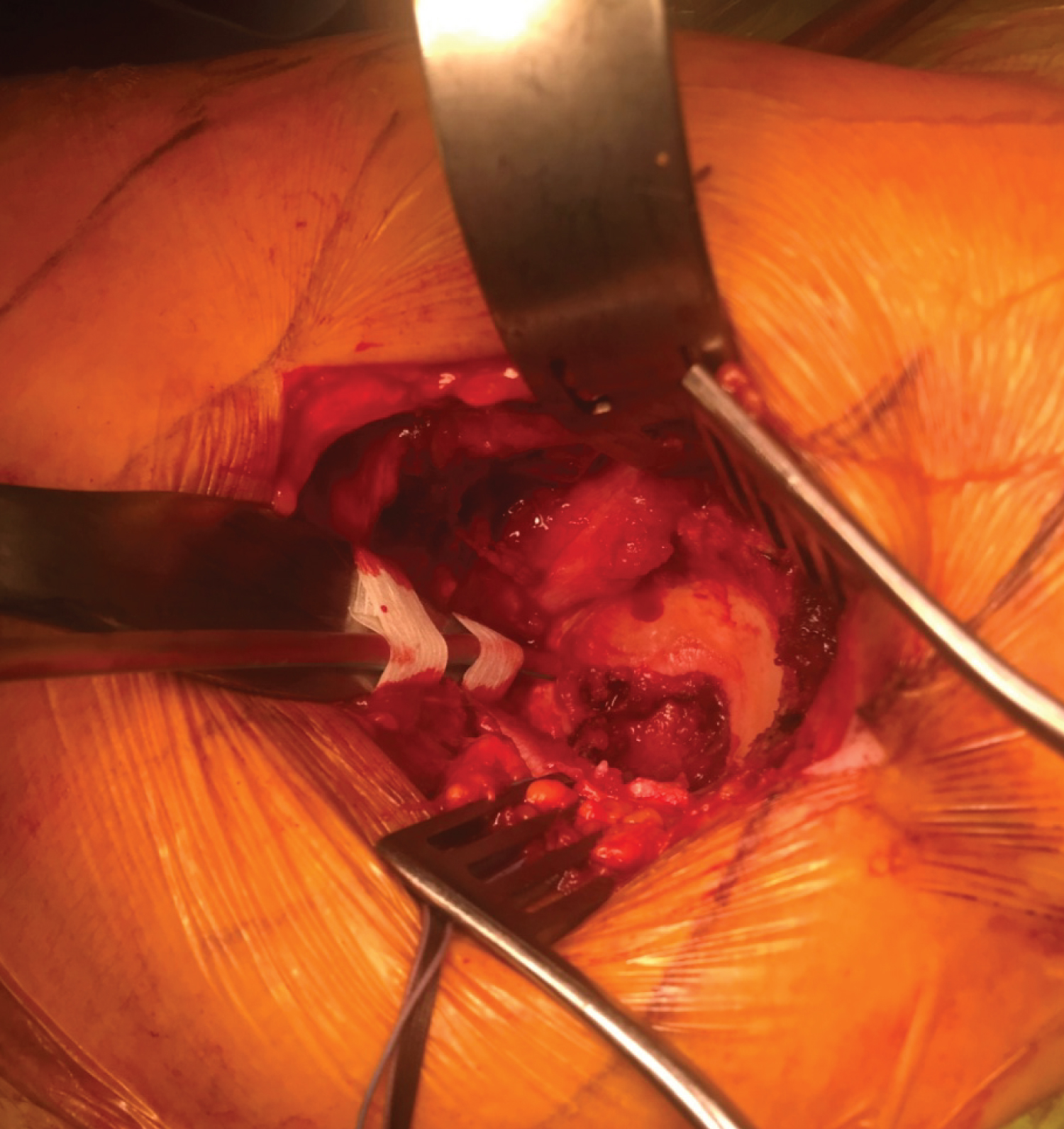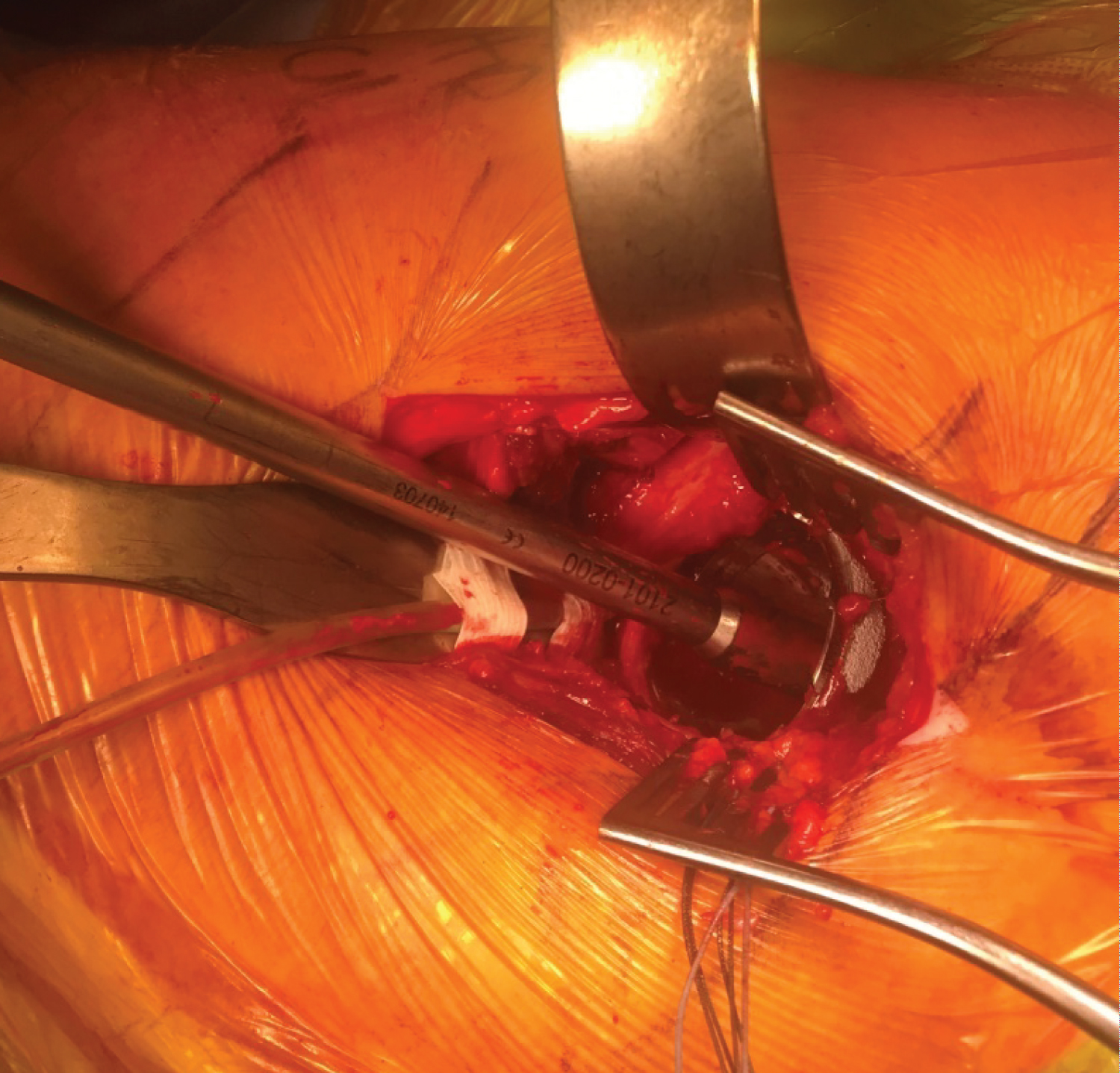The TAL Suction Retractor: A Simple Technique for Visualising the Transverse Acetabular Ligament (TAL) During Total Hip Replacement (THR) Surgery
Keywords
Transverse acetabular ligament, Total hip replacement, THR, Hip, Acetabular, Suction, Retractor
Introduction
The transverse acetabular ligament (TAL) is an anatomical landmark that is of particular use during primary total hip replacements (THR). It can be used to control acetabular depth, height and version [1]. Visualisation is important to aid the orientation of the acetabular cup and it is a structure that can be identified in virtually every primary hip replacement surgery [2]. A study of 1,000 consecutive primary THRs identified and exposed the TAL in 99.7% of cases [2].
The advantages posed by the TAL are that it is independent of patient positioning, cup version can be individualised to the patient and it is an easy-to-teach technique [3]. Alignment of the acetabular component parallel to the TAL as a soft tissue landmark can lead to reduced malpositioning of the acetabular component in THR according to the traditional safe zones thus reducing the risk of dislocation [4].
Technique
Having highlighted the importance of directly visualising the TAL to aid with orientation of the acetabular component in THR, we now describe a very simple technique for maintaining visualisation during acetabular preparation, template trial and cup implantation.
A thoracic suction catheter is taped to the distal end of a blunt Hohmann's retractor with two steristrips wrapping around the catheter and retractor leaving approximately 1-1.5 cm of retractor exposed (Figure 1). Our preference is for a thoracic suction catheter with side holes and a proximal end which allows direct connection with the tip of the Yankauer suction.
The blunt Hohmann's retractor is used as the inferior acetabular retractor in the usual way, placed inferior to the transverse acetabular ligament, resting on the posterior ischial surface. The catheter suction tip should lie just under the TAL, in the most dependant point of the wound (Figure 2). The TAL suction catheter can be used continuously or intermittently to facilitate visualisation of the TAL during, reaming, trialling and acetabular cup placement.
The surgeon's assistant, who would ordinarily maintain suction, may now assist the primary surgeon with other intra-operative tasks.
The TAL suction retractor allows for a largely bloodless field that permits direct visualisation of TAL throughout acetabular cup trial and placement (Figure 3).
Conclusion
The transverse acetabular ligament (TAL) suction retractor is a simple improvised surgical tool that makes it easier to visualise the TAL during acetabular preparation in total hip replacements. The TAL suction retractor provides suction in the most dependant point of the surgical wound, preventing unnecessary movement and facilitates a clutter-free surgical field leading to more streamlined and efficient surgery with potential reduced operative times.
Conflict of Interest
None.
References
- Beverland DE, O Neill CKJ, Rutherford M, et al. (2016) Placement of the acetabular component. The Bone & Joint Journal 98: 37-43.
- Archbold HAP, Mockford B, Molloy D, et al. (2006) The transverse acetabular ligament: An aid to orientation of the acetabular component during primary total hip replacement: A preliminary study of 1000 cases investigating postoperative stability. The Journal of Bone and Joint Surgery 88: 883-886.
- Beverland D (2010) The transverse acetabular ligament: Optimizing version. Orthopedics 33: 631.
- Kalteis T, Sendtner E, Beverland D, et al. (2011) The role of the transverse acetabular ligament for acetabular component orientation in total hip replacement. The Journal of Bone and Joint Surgery. British volume, 93: 1021-1026.
Corresponding Author
Ben Murphy, MB BCh BAO, MCh, MRCSI, Department of Trauma & Orthopaedic Surgery, St Vincent's University Hospital, Elm Park, Dublin, Republic of Ireland.
Copyright
© 2021 Ben M, et al. This is an open-access article distributed under the terms of the Creative Commons Attribution License, which permits unrestricted use, distribution, and reproduction in any medium, provided the original author and source are credited.







